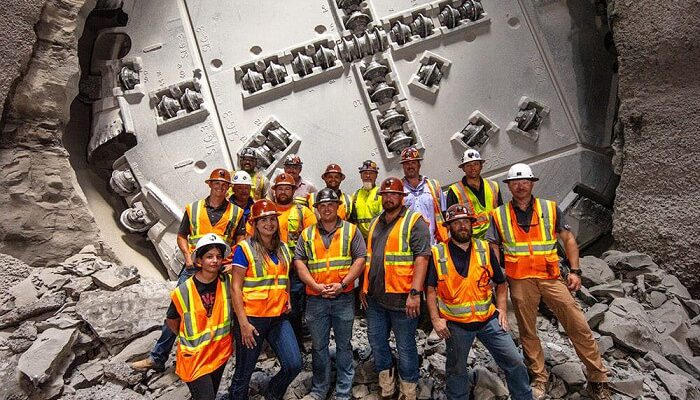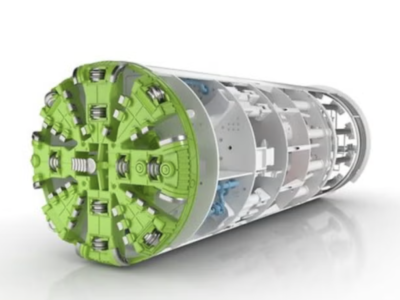
As the largest water tunnel project under construction in North America, the Mill Creek Drainage Relief Tunnel in Texas is hosting TBM’s operation.
In order to provide 100-year flood protection for east and south-east Dallas, the Robbins‘ main beam TBM, named Big Tex, dug a five-mile (8km) tunnel in chalk and shale with monthly progress of 1,634ft (498m).
The intended TBM is the largest hard-rock TBM ever to bore in the US, while it is also the first dual-diameter machine. Due to the different flow rates for the upstream and downstream sections, a change in size was required and Southland/Mole Joint Venture successfully made the conversion from 38ft (11.6m) to 32.5ft (9.9m) diameter at 1.7 miles (2.8km) into the bore.
The TBM features a specialized cutterhead with removable spacers and adjustable bucket lips to achieve conversion.
According to Nick Jencopale, senior project manager for contractor JV Southland/Mole: “The TBM conversion was a unique challenge that we were excited about, and ultimately provided a more efficient method for the desired product compared to the alternative options. Hopefully, the successful conversion proved that this option can be considered for future tunnel projects.”
“While there were many detailed steps to the conversion process, precision design of the machine was a key aspect. We started with a smaller machine, then we made a kit or second skin that was slightly larger. When the time came, we just took that skin off. It was essentially that simple,” said Robbins field service manager Evan Brinkerhoff.
Lasting almost four months, the conversion was completed in April 2021.
Considering that the tunnel passes through Austin chalk at depths from 31-46m beneath Dallas and the route was potentially gassy, probe drilling was compulsory throughout the project.
The relatively favorable ground conditions in much of the tunnel, including low rock strength and low abrasiveness, meant only eight disc cutters were changed boring at the larger diameter. At the time of the diameter change, the full dress of cutters was changed, and since that change, only 14 cutters needed replacing. Crews did encounter some fault zones and installed rock bolts and wire mesh in the tunnel crown as needed.
Currently work is due to commence on installing the final lining, whereas the determined deadline for completion of the construction work is late 2024/early 2025.
















